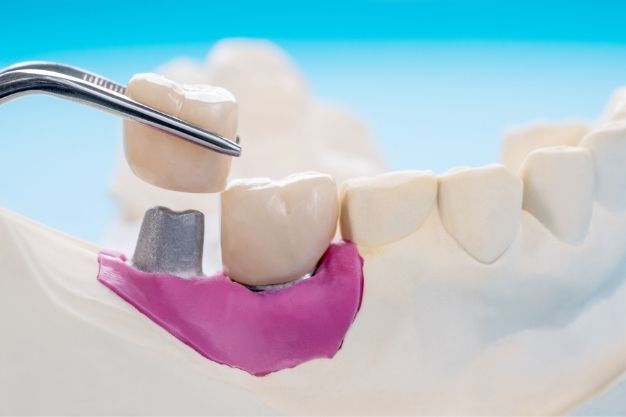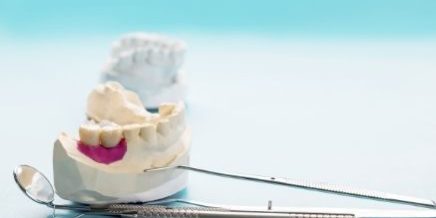“Do you know? It is predicted that 60 percent of Indians have lost at least one adult tooth between the ages of 35 and 44, while 25 percent of individuals would lose all of their permanent teeth by reaching retirement age.”
A bridge is a fixed dental restoration that is used to replace at least one missing tooth by connecting an artificial tooth completely to neighboring teeth or dental implants. A bridge will span the gap left by missing teeth. They are attached to the natural teeth or implants that fill this space. Do most people believe in a single tooth bridge? Is it safe to avail single-tooth bridges?
A dental bridge is one of the best ways to replace one or more lost teeth. Crowns, dental bridges, and other oral hygiene treatments can all be used to improve one’s smile. Let us explain to you complete information on bridges, types of bridges, and much more. I must suggest that you keep on reading this amazing blog.
The Benefits of Getting a Dental Bridge
Your dentist may consider a dental bridge if you are missing teeth for a variety of reasons, including:
- Preventing the Shift of Single Tooth Bridge
- A dental bridge is designed to support or prevent your natural teeth from shifting toward the gap in your mouth. They remove regular teeth’ inherent stability and cause difficulties with adjacent teeth
Functionality
Large gaps in your teeth will hurt you since you will have difficulty chewing and speaking. The gaps may cause you to have difficulties generating sounds and pronouncing words that were previously easy for you – you may even acquire a lisp or other impairment due to the gaps. The teeth functioning resumes after the dental bridge placement.

Cosmetic Efforts
A dental bridge will restore the sequence of your smile while preserving the form of your face. Missing teeth can change your facial expressions and make it difficult to smile in public.
What exactly are bridges?
A bridge is a well-known dental restoration treatment that replaces at least one lost tooth by treating an artificial tooth to nearby teeth or dental implants. A bridge is used to stretch the gap between your teeth. They effectively fill gaps, look like real teeth, and revitalize your smile.
Bridge Varieties
Many people are perplexed about the many types of bridges and how they affect dentistry. Here are the specifics concerning the bridge kinds.
- Traditional Bridges
Traditional bridges are a typical form created by constructing a crown for your teeth or implanting a missing tooth with either side supported by a pontic (fake tooth). These are powerful and long-lasting if properly cared for. Traditional bridges commonly replace missing teeth, premolars, and molars. Traditional porcelain-fused-to-metal bridges, as well as ceramic and gold-fused bridges, are employed
2. Cantilevers Bridges
Cantilever bridges are similar to traditional bridges in that they are constructed of porcelain bonded to metal and are typically utilized when a neighboring tooth is lost
Maryland bridges are also known as resin-bonded bridges or Maryland bonded bridges. These are metal rings attached to existing teeth to provide a framework for Maryland bridges
4. Bridges Supported by Implants
These are used to repair teeth (premolars and molars), and are excellent for patients who have at least three lost teeth. Instead of dental crowns or metal frames, these are supported by dental implants
Choose from the options listed above to protect your smile and live a happy life.
Top 6 Dental Bridge Advantages that you should know
Dental bridges are progressive and pleasant, resulting in healthy-looking smiles for the majority of people. Dental problems can be major or little; they have a significant impact on your look and reveal a lot about yourself. People who have missing teeth may take pleasure in their appearance. Dental bridges may alleviate the insecurities produced by missing teeth, which are a thing of the past.
Dental bridges have the following advantages:
- Restoring a beautiful, healthy-looking smile that seems natural
- Getting a youthful appearance
- Reviving traditional oral behaviors such as chewing
- Restoring speech clarity as well as other functions
- To reduce the stress of chewing on other teeth, proper biting force distribution is suggested
- Preventing major dental issues such as surrounding teeth falling into the space created by the lost tooth or teeth
What Is the Lifespan of Dental Bridges?
Dental bridges have five to fifteen years, and in some cases, much longer. It is not uncommon for a fixed bridge to last more than ten years with proper dental care and frequent exams.
Will Eating Be Difficult With a Dental Bridge?
Replacing lost teeth with a dental bridge should make eating more comfortable. Eat soft meals that have been chopped into little bits until you become used to the bridge.
Bridge vs. dental implant
Both dental implants and bridges can provide natural-looking outcomes, but they each have their own set of advantages and disadvantages. Here’s how the two tooth replacement therapies work out.

Advantages of Dental Bridges
- Insurance coverage is very probable
- There is no need for invasive surgery or bone grafting
- Dental implants often have a reduced upfront cost and require only two appointments to your dentist spaced out over a few weeks
Dental Bridge disadvantages
- Must be updated every 5 to 7 years (although it can last more than ten years)
- More cavities and tooth decay in adjacent teeth than with implants might harm the good teeth around the missing tooth loses a natural-looking appearance with age
Pros of Single Tooth Bridge
- It can last 15 years or more and are the market’s longest-lasting alternative
- On the other hand, Bridges keep their natural-looking aspect for a longer period
- Avoid causing harm to the healthy teeth around the implant
- An extremely high 10-year success rate, estimated to be approximately 97 percent
The disadvantages of Single Tooth Bridge
- Insurance coverage is minimal in availability
- The therapy process may complete in 6 months
- Larger initial outlay
- It might result in surgical complications
Improving Oral Health Overall
- These may be customized since various pontic materials and pricing are accessible
- Very low-maintenance; dental bridges may be cared for in the same way real teeth are
It is well known that missing teeth may exclude dental bridges; in all circumstances, professional guidance from a dentist is required. They can recommend the best treatment for a single tooth bridge based on the findings of the diagnostic tests and serial examinations.
Bridges or single teeth treatment entails an orthodontist or dental practitioner, or with locally established frameworks, the individual, taking the shape of the patient’s teeth, which is used to perform an advanced tooth examination.
The mechanized model for dental braces suggests arranging teeth between their current and desired positions, and aligners are made for each stage. For two weeks, each aligner is worn for 20 hours per day. These gradually move the teeth into the position agreed upon by the orthodontist or dentist and the patient.

